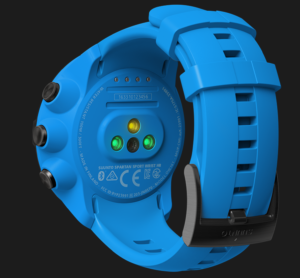Indoor Climbing and the Apple Watch

Indoor Climbing and the Apple Watch are a bad mix. They are a bad mix because the Apple watch has an unprotected glass screen. The screen is so exposed that last Thursday I shattered the screen without realising until I got home and tried to use it but the capacitive screen did not respond.
At first I couldn’t see anything so I tried to feel it with my nail (whatever is left of it after an evening of climbing) and I could hardly feel anything. Eventually by trying to look at the surface with light from different angles I could see two distinct cracks in the screen splitting the screen in to three distinct segments.
If I was your average smartwatch user I’d say that this is normal because smartwaches are made to be intelligent, not solid. I’d then point you to the fact that I have had suunto diving watches, Suunto feature watches and then Suunto Flagship watches such as the Ambit 2, 3 and then the Suunto Spartan watches. The Suunto Ambit 2 and Ambit 3 survived years of climbing, both rock climbing and via ferrata.
My Apple Watch Series 3 was “accidentally damaged”, the way Apple describes the condition of my watch, after just three climbing sessions. I had bouldered once, climbed once indoors, and once outdoors without issue. It’s when I went climbing indoors the second time that I must have done something to hairline fracture the glass.
In my humble opinion, with over 700 tracked activities with Suunto devices without issues, Apple is fatally flawed. In my opinion a smartwatch should be designed so that the screen is protected. The screen should be designed to survive what life has to throw at it. My Suunto Ambit 2 and 3 have had countless impacts on rocks over the years. You can see on the bezel of my Suunto devices that they have countless scratches. The glass however is fine. You need to look carefully to see any sign of scratches.
It is with this in mind that I strongly feel that Apple should take responsibility for making a device so mediocre that it gets cracked while climbing indoors. Indoor climbing is on wooden panels and fiberglass holds. It’s not on granite or other hard rock surfaces. A watch screen should survive this environment.
Replacing the watch screen via Apple would cost 230 CHF without taxes, possibly about 250 CHF with taxes. The watch itself cost 397 CHF new. It goes without saying that I did not ask for the unit to be fixed. It is because of Apple’s poor design that this watch suffered damage and it is Apple’s responsibility to replace the unit free of charge.
I didn’t drop it, I didn’t smash my wrist against something. I didn’t even know the unit was damaged until I got home and tried to use it. Fitness tracking watches should not be this fragile.




